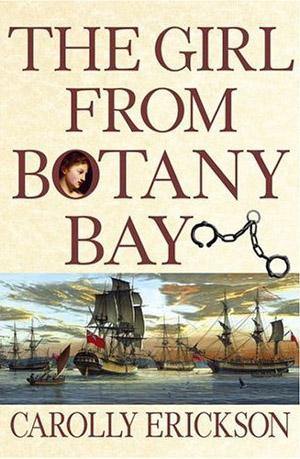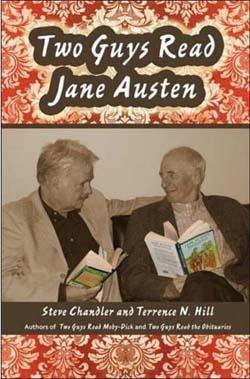Claire Tomalin and Carol Shields on Jane Austen's Life
 Jane Austen - A Life
by Claire Tomalin
Jane Austen - A Life
by Claire Tomalin
Reviewed By Arti of Ripple Effects
As a biographer, Tomalin’s account of Jane Austen’s life is meticulous and exhaustive. Her analysis is critical and sharp, her writing style bold, precise and cutting. The following excerpts are prime examples.
When speculating about the possible consequence of Mrs. Austen sending her infants away to be raised, Tomalin makes the following inference:
“The most striking aspect of Jane’s adult letters is their defensiveness. They lack tenderness towards herself as much as towards others. You are aware of the inner creature, deeply responsive and alive, but mostly you are faced with the hard shell; and sometimes a claw is put out, and a sharp nip is given to whatever offends. They are the letters of someone who does not open her heart; and in the adult who avoids intimacy you sense the child who was uncertain where to expect love or to look for security, and armoured herself against rejection.”Or this to say about mother and daughter:
“Mrs. Austen had a sharp tongue for neighbours, appreciated by her daughter and passed on to her.”Or, with the episode of Jane accepting and later recanting Harris Bigg-Wither’s marriage proposal, Tomalin’s view is clear:
“We would naturally rather have Mansfield Park and Emma than the Bigg-Wither baby Jane Austen might have given the world, and who would almost certainly have prevented her from writing any further books.”If you can appreciate such kind of abrasive commentaries, you would certainly find it entertaining to read Tomalin’s than an otherwise ordinary biographical sketch. Ironically, I have a feeling that this is the kind of biographies Jane would have written if she could write without censure. Putting her incisive analysis to good use, Tomalin explores Jane’s creative process, giving credits to her imaginative ingenuity. The limitation of physical and social mobility render Jane’s world parochial, yet her characters and story lines are diverse and innovative. Her writing are evidences of pure creative concoctions.
“…essentially she is inventing, absorbed by the form and possibilities of the novel… The world of her imagination was separate and distinct from the world she inhabited.”For Jane, it is imagination and not experience that has given her wings to soar outside of her bleak circumstances. A vivid example is the writing of the sprightly Pride and Prejudice. The novel was written during a time of family tragedy with the death of Cassandra’s fiancé Tom Fowle, and amidst Jane’s own disappointment with the evaporation of hope with Tom LeFroy. All in all, Tomalin’s sharp and cutting writing style works towards Jane’s favour. Her biography is resourceful and entertaining, her analysis incisive, and her conclusion moving. Above all, Jane would have found it amusing and satisfying. Jane Austen: A Life by Claire Tomalin, includes an additional 16 pages of photos. Buy online here! Paperback: 384 pages Publisher: Penguin; New edition edition ISBN-10: 0140296905 ISBN-13: 978-0140296907 RRP: £9.99
 Jane Austen by Carol Shields
Jane Austen by Carol Shields
Reviewed By Arti of Ripple Effects
Carol Shield’s Jane Austen is a succinct and gentler rendition of Jane’s life. Shields and her daughter, the writer Anne Giardini, were presenters at the JASNA AGM in Richmond, Virginia in 1996. This book came out five years after that. Shields has crafted a highly readable literary gem, adorned by her lucid and flowing writing style.
As a novelist, Shields’ main thrust is to trace Jane’s development as a writer. Exploring her family circumstances as she was growing up, Shields presents to us a gifted youth of exuberant spirit, one who had known the joy of theatrical performances and experienced the exhilarating power of humor. Jane’s ingenuity lies in her parodies. As a young contributor to her older brother James’ weekly magazine The Loiterer , she was already a skillful writer of satires. Shield notes that:
“…it is the satirical form of her youthful writing that astonishes us today. What makes a child of twelve or thirteen a satirist? … Jane Austen had been nurtured, certainly, in a circle appreciative of burlesque… but she was also a small presence in a large and gifted household. Her desire to claim the attention of her parents and siblings can be assumed. She gave them what they wanted, that which would make them laugh and marvel aloud at her cleverness”This yearning to entertain, influence and be acknowledged remained the motivation for Jane’s writing throughout her life. Her youthful gigs and satires transformed into full-fledged novels. Just take Northanger Abbey for example. It is a burlesque of the Gothic in a style which she was so familiar with since her girlhood days. And a look at the characters like Mr. Collins in Pride and Prejudice, or Mrs. Elton in Emma, readers could readily appreciate Jane’s “comic brilliance and… consummate artistry”. Shields offers in-depth analysis of Austen’s works, exploring not just the writing but the psyche of a brilliant mind. Like Tomalin, she dispels the myth of art imitating life, and credits Jane’s imagination as the key ingredient of her ingenuity:
“Her novels were conceived and composed in isolation. She invented their characters, their scenes and scenery, and their moral framework. The novelistic architecture may have been borrowed from the eighteenth-century novelists, but she made it new, clean, and rational, just as though she’d taken a broom to the old fussiness of plot and action. She did all this alone.”Considering the physical and social limitations confining Jane, it was her writing that transported her to brave new worlds, and the vehicle was her imagination. As I finished reading these two biographies, Virginia Woolf’s praise of Jane Austen resonated in my mind:
“Here was a woman about the year 1800 writing without hate, without bitterness, without fear, without protest, without preaching. That was how Shakespeare wrote.”
While we lament that Jane had left only six complete novels upon her untimely death at forty-one, we treasure these legacies of imagination and the inspiration they evoke for generations to come.
Paperback: 208 pages Publisher: Phoenix; New Ed edition ISBN-10: 0753812568 ISBN-13: 978-0753812563 RRP: £7.99 Arti reviews movies, books, arts and entertainment on her blog Ripple Effects. She has pleasure in many things, in particular, the work and wit of Jane Austen.
Arti reviews movies, books, arts and entertainment on her blog Ripple Effects. She has pleasure in many things, in particular, the work and wit of Jane Austen. 


Leave a comment
This site is protected by hCaptcha and the hCaptcha Privacy Policy and Terms of Service apply.